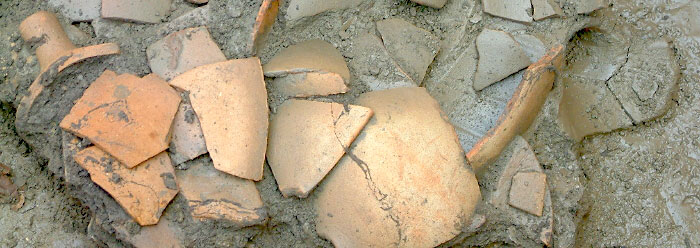British researchers have developed a reliable method for determining the age of ancient clay pottery. The dating technique is based on the fact that the clays used to make pots over the centuries demonstrate a very consistent rate of change.
A study published in Proceedings of the Royal Society A described the new process. When clays are fired, water is driven out of the material, hardening it. As soon as a clay pot is removed from the kiln, it begins reabsorbing hydroxyl ions, found in water, at a very reliably-measurable rate.
Since each pot is made of a unique mixture of clays, it reabsorbs these ions at a unique rate. That rate can be calibrated by experiment, thus removing one of the main assumptions inherent in most natural dating methods: the composition of the starting material. Other dating assumptions, discussed in detail in The Young Earth by geologist Dr. John Morris, include the rate of the particular process being used as a time clock, and the possibility of outside forces or materials altering the clock system at any point.1
In effect, this new technique winds back the clock by reheating the clay, driving out hydroxyl ions and thus restoring the pottery piece to its original lightweight condition. Then, the weight of the sample from its near-original state (i.e., when it was first fired) is subtracted from the heavier, hydroxyl-rich weight that it had when it was discovered. Given the rate of reabsorption determined through experimentation, the age of the fired clay can be calculated.
However, variations in the established age of a fired pot are still possible, since the hydroxyl reabsorption rate is temperature-dependent. Thus, some educated guesses about ancient weather conditions, especially the average temperature, are required for this technique, which the authors of the study termed “rehydroxylation dating.”2
In all, the dates the researchers had calculated match very well with samples that have known ages. The procedure at this point is limited to a 2,000-year maximum range. Although not relevant as a dating technique for any of the ancient events recorded in Genesis chapters 1-11, the new and elegant technique may prove very useful for dating clay fragments as old as the time of Christ, thereby giving forensic scientists one more tool for evaluating earth’s history. http://www.icr.org/article/new-way-find-age-ancient-pottery/
References
- Morris, J. 2007. The Young Earth: The Real History of the Earth – Past, Present, and Future, revised and expanded. Green Forest, AR: Master Books, 48-71.
- Wilson, M.A. et al. 2009. Dating fired-clay ceramics using long-term power law rehydroxylation kinetics. Proceedings of the Royal Society A. 465 (2108): 2407-2415. Published online before print May 27, 2009, accessed June 30, 2009.
* Mr. Thomas is Science Writer at the Institute for Creation Research.
